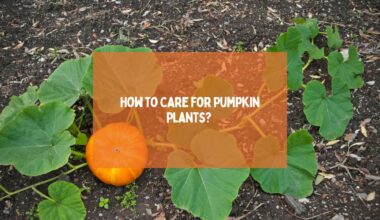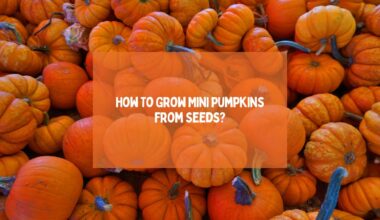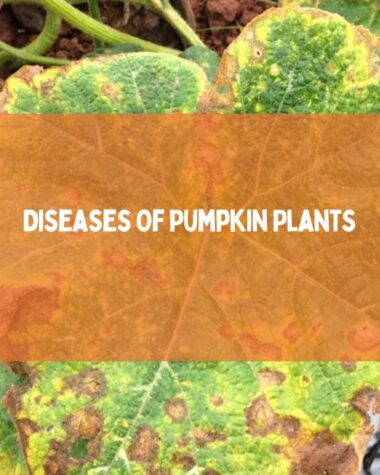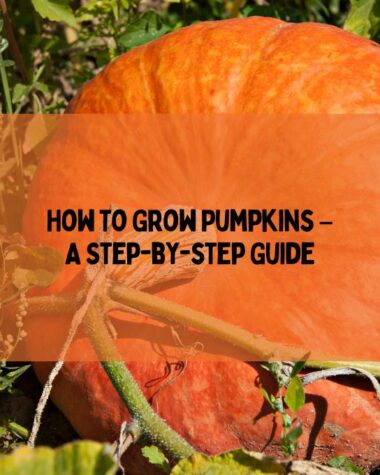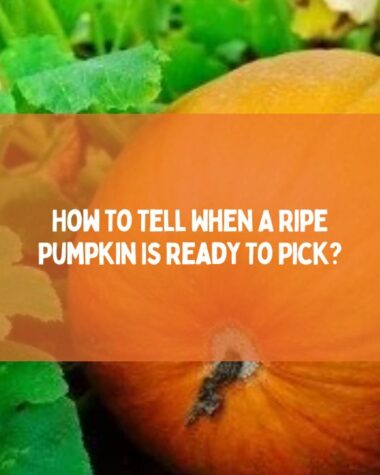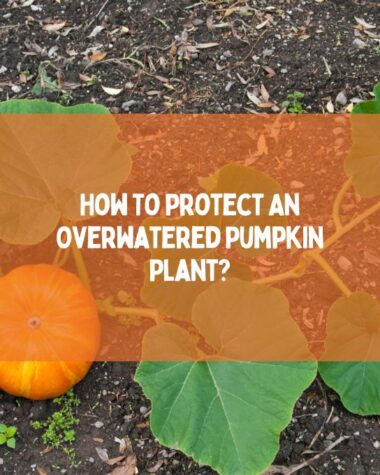For growing pumpkin seeds in pots, You need to select a suitable pot, fill it with good-quality soil, plant the pumpkin seeds, and take care of the plant by watering, providing adequate sunlight and fertilization, and providing support as the plant grows. With proper care, you can enjoy a bountiful harvest of delicious pumpkins that you can use for cooking, carving, or decoration.
Growing pumpkins in a pot is an excellent way to enjoy the benefits of pumpkins without requiring a large garden. Pumpkins are easy to grow, and they can be grown indoors or outdoors.
This article helps you grow pumpkins from seeds in pots. It might help you store more food and produce a large number of pumpkins.
Let’s start.
8 Ways To Grow Pumpkin From Seeds In Pots
When grown in a pot, pumpkins need regular care, but the process is straightforward. It’s also important to provide support for the vines as they grow, as pumpkins can become quite heavy.
The ways are described below;
1. Choose A Right Pot
Choosing the right pot is an important step when growing pumpkins from seeds in pots.
Select a pot that is at least 12 inches deep and 20 inches in diameter. This will provide enough space for the pumpkin plant to grow.
Make sure the pot has good drainage holes to allow excess water to escape. This will prevent the soil from becoming waterlogged, which can lead to root rot and other problems. Select a pot made of a durable material such as ceramic, plastic, or terracotta.
Avoid using metal pots, as they can heat up and damage the plant’s roots. Keep in mind that a full-grown pumpkin plant can be quite heavy, so choose a pot that is sturdy and can support the weight of the plant.
Consider whether you want to move the pot around. Once they are filled with soil and plants larger pots can be difficult to move.
Related Reading
2. Fill The Pot With Soil
After you have selected a suitable pot for growing your pumpkin plants, the next step is to fill it with soil. Choose high-quality potting soil that is loose and well-draining. Avoid using garden soil or topsoil, as they can be too dense and heavy for container gardening.
Leave enough space at the top of the pot to allow for watering and to prevent the soil from overflowing when it rains. Use a trowel or your hands to level the soil in the pot, making sure it is evenly distributed.
Mix in a slow-release fertilizer or compost to provide your pumpkin plants with the nutrients they need to grow. Thoroughly water the soil after filling the pot to settle it and ensure that it is evenly moist.
3. The Right Kind Of Pumpkin Seeds
Selecting the right kind of pumpkin seeds is an important factor when growing pumpkins from seeds in pots. Some varieties of pumpkin plants are better suited for container gardening than others.
Look for varieties that are compact and don’t require a lot of space to grow. Look for pumpkin seeds from a reputable supplier that is fresh and of high quality. Avoid using old or expired seeds, as they may not germinate or grow well.
Some pumpkin varieties are resistant to diseases such as powdery mildew, which can be a problem in container gardening. Look for disease-resistant varieties to help prevent problems.
4. Choose Sunny Spot
Pumpkins require a lot of sunlight to grow, so choose a location that gets at least 6–8 hours of direct sunlight per day. Avoid placing your pumpkin pot in a location that is shaded for most of the day.
This can cause your pumpkin plants to grow weak, spindly stems and produce fewer fruits. While pumpkins need full sun, they also need protection from extreme heat, wind, and frost.
Consider providing some shade in the afternoon during hot summer days or moving the pot to a protected area during cold nights. If you don’t have access to an outdoor space with full sun, you can still grow pumpkins indoors with the help of growing lights.
Select LED lights that provide the full spectrum of light for optimal growth. Remember to choose a location with full sun, avoid shady areas, provide some protection, and consider indoor growing lights if necessary.
5. Plant The Seeds In the Pot
Planting the pumpkin seeds in the pot is a crucial step in growing pumpkins from seeds in pots. Start by filling the pot with soil, leaving about 2 inches of space at the top. Make a small hole about 1 inch deep in the soil using your finger or a small stick.
Place one or two pumpkin seeds in the hole and cover them with soil. Water the soil gently, being careful not to wash away the seeds or expose them to too much water. Cover the pot with plastic wrap or a plastic lid to create a greenhouse effect and keep the soil moist.
Place the pot in a warm, sunny location where it can get at least six hours of direct sunlight each day. Once the seedlings start to grow, remove the plastic cover and thin out the weaker seedlings, leaving only one or two of the strongest plants to grow in the pot.
6. Water The Soil Containing Seeds
Pumpkin seeds need consistent moisture to germinate and grow. Keep the soil evenly moist by watering it regularly, but avoid over-watering as this can lead to root rot. When watering, make sure to water deeply so that the soil is thoroughly moistened.
This will encourage the roots to grow deep into the soil and help the plant become more resilient. Avoid using a strong stream of water, as this can wash away the seeds or damage the seedlings.
Use a watering can or hose with a gentle spray nozzle to water the soil. Water your pumpkin seeds in the morning, as this will give them the moisture they need to grow throughout the day.
Avoid watering at night, as this can promote the growth of fungi and other pests. Use a moisture meter or stick your finger in the soil to check the moisture level. If the soil feels dry to the touch, it’s time to water.
7. Fertilize The Pumpkin Plant
Select a balanced fertilizer with equal amounts of nitrogen, phosphorus, and potassium. This will provide the essential nutrients that pumpkins need to grow. Wait until your pumpkin plant has a few sets of true leaves before applying fertilizer.
This is usually about 2–3 weeks after germination. Read the instructions on the fertilizer package carefully and apply the recommended amount of fertilizer for your pot size.
Over-fertilizing can damage your plants, so be careful not to use too much. After applying fertilizer, water the soil thoroughly to help the nutrients reach the roots. If you prefer organic gardening, you can use organic fertilizers such as compost, manure, or fish emulsion.
8. Harvest The Pumpkin
Check the maturity of your pumpkin by examining its skin. When the skin is hard and difficult to pierce with a fingernail, it’s ready to be harvested.
Use pruning shears to cut the stem of the pumpkin about inches above the pumpkin. This will prevent the stem from breaking and damaging the pumpkin during the harvest. Handle the pumpkin with care, especially during the harvest. Avoid dropping or bumping it, as this can cause it to develop bruises and rot.
After harvesting, cure the pumpkin by placing it in a warm, dry, and well-ventilated area for about 10–14 days. This will toughen the skin and extend the shelf life of the pumpkin. Store the cured pumpkin in a cool, dry, and dark area.
Related Reading
- Growing Tomatoes in Small Spaces: 6 Best Varieties to Try
- 5 Effective Strategies to Control Weeds While Growing Cucumbers
- Troubleshooting Carrot Growing Problems: Why Won’t My Carrots Develop?
Conclusion
Growing pumpkins from seeds in pots can be a fun and rewarding gardening project. Select a pot that has drainage holes. Use a well-draining potting mix and fill the pot up to about 1-2 inches from the top. Plant the seeds about 1 inch deep in the soil, and water them well.
Select a location that gets at least 6–8 hours of direct sunlight per day. Harvest the pumpkin when the skin is hard and difficult to pierce with a fingernail. Remember to provide proper care and attention to your plants, and have fun watching them grow.
Through this article, you can grow pumpkins from seeds in pots and enjoy the fruits of your labor.
Thanks For Reading!
